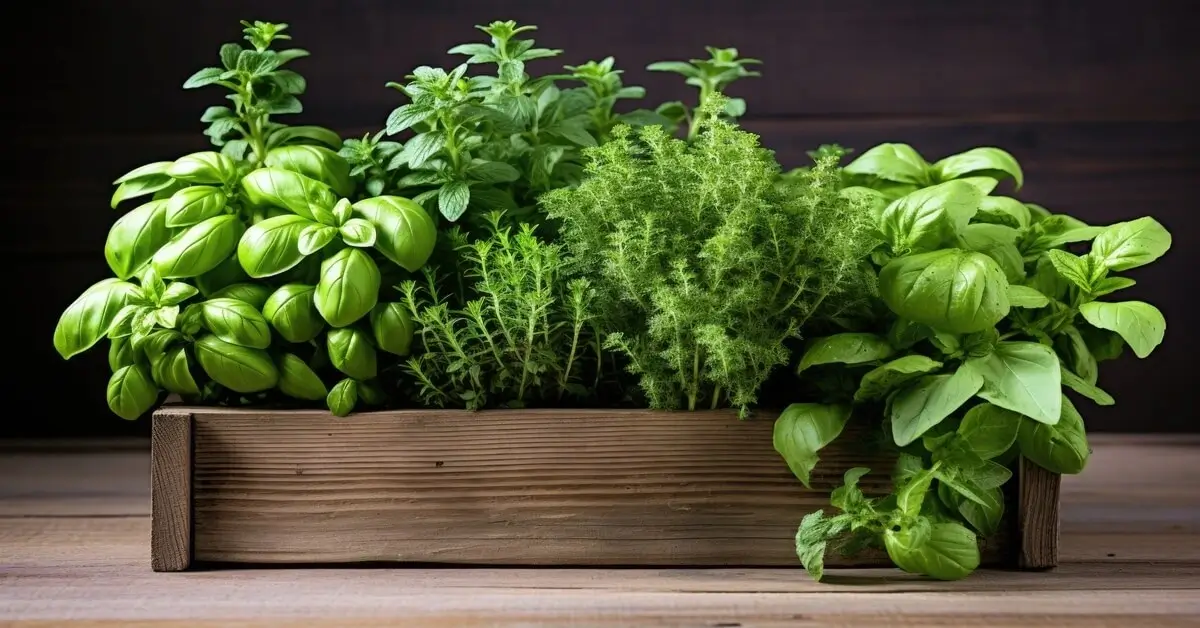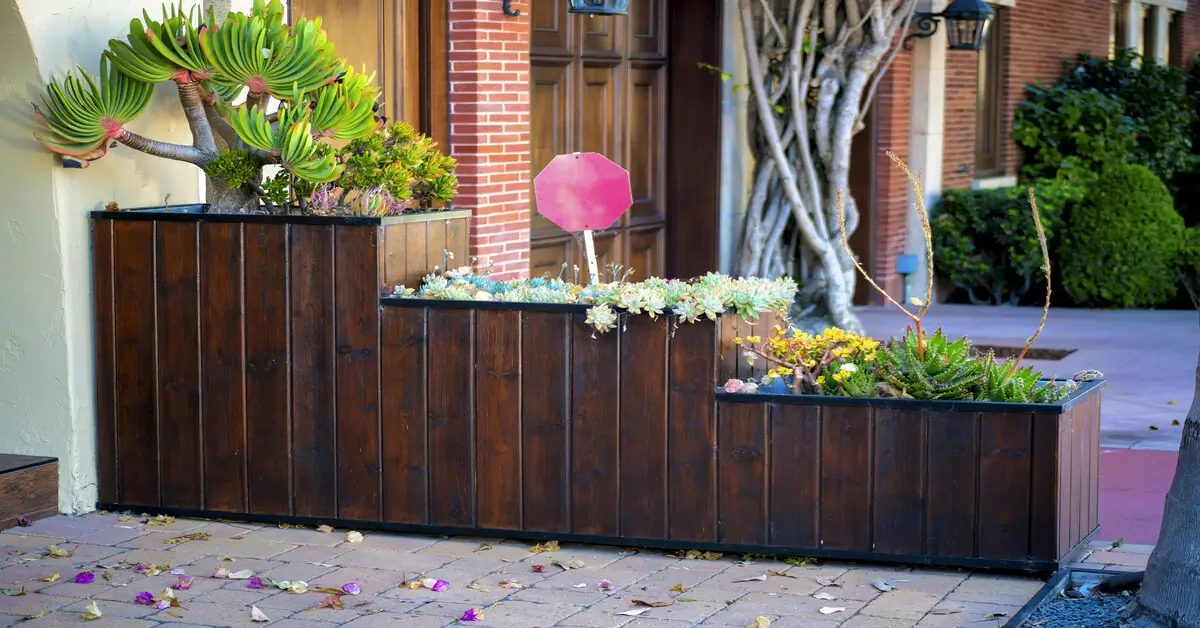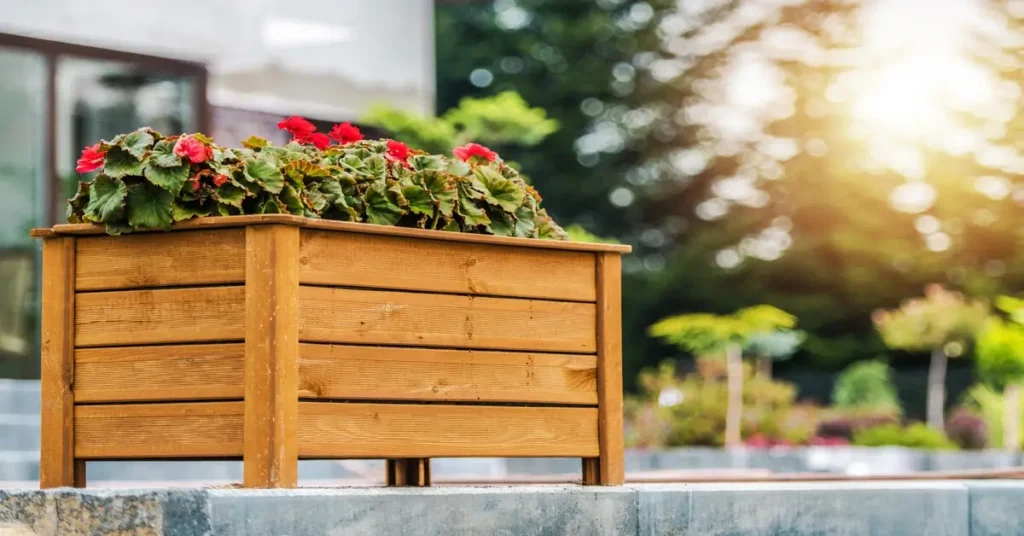Have you ever wondered how long your planter boxes will stand the test of time? Whether you’re a seasoned gardener or a newbie, the lifespan of your planter boxes is a crucial factor that can impact your gardening experience. Your chosen material can make a difference, from cedar and redwood to metal and concrete. Let’s dive in to explore how long different types of planter boxes can last and how to make them last longer.
Key Takeaway
The longevity of your planter box depends on various factors, but here’s a general guide based on material:
- Wooden boxes (cedar or redwood): Up to 20 years with proper care
- Plastic boxes: 10 to 20 years
- Metal boxes: 20 to 50 years
- Fiberglass boxes: 15 to 30 years
- Concrete boxes: 50 to 100 years with maintenance
Factors Affecting the Lifespan of Planter Boxes

Understanding the variables influencing how long your planter boxes last can help you make informed choices and maximize your gardening investment.
Material of the Planter Box
The type of material used in constructing your planter box plays a significant role in its longevity. While cedar and redwood are naturally rot-resistant, other types of lumber, like untreated wood, may not fare as well. Metal planter boxes and those made from stone or concrete can last up to 50 years, offering a durable alternative to wood.
Climate and Environmental Conditions
Your local climate can also impact the lifespan of your planter boxes. Humidity, temperature fluctuations, and exposure to harsh weather conditions can accelerate wear and tear. For instance, wooden planters in a humid climate may be more susceptible to rot, reducing their lifespan.
Maintenance and Care
Regular maintenance can extend the life of your planter boxes significantly. Wood sealer or preservative can protect the wood from moisture and decay. Additionally, ensuring proper drainage by adding drainage holes can prevent water accumulation, leading to rot.
How Long Do Different Types of Planter Boxes Last?

Have you ever wondered how long your garden bed will stand the test of time? The answer largely depends on what it’s made of. Let’s explore the longevity of various planter box materials.
Wooden Planter Boxes
Regarding wooden planter boxes, cedar and redwood steal the spotlight. These rot-resistant wood types can make your raised garden bed last many years. However, untreated lumber may succumb to rot much sooner. Applying a wood sealer or wood preservative can extend the life of your wooden planter.
Plastic Planter Boxes
Plastic planter boxes offer a budget-friendly option for your garden. While they may last several years, they are less durable than cedar or redwood boxes. Over time, UV rays can make the plastic brittle, leading to cracks.
Metal Planter Boxes
Metal planter boxes, often crafted from aluminum or steel, are durable for your raised garden. With proper care, these garden boxes can last up to 50 years. However, they may rust if not treated, affecting their longevity.
Fiberglass Planter Boxes
Fiberglass planter boxes are a modern, long-lasting alternative. These boxes can endure for decades and are resistant to harsh weather conditions, making them a reliable choice for your garden bed.
Concrete Planter Boxes
Concrete planter boxes are the way to go if you’re looking for a nearly indestructible option. These heavy-duty boxes can last up to 50 years or more and are well-suited for a permanent spot in your garden.
Tips to Make Planter Boxes Last Longer
Use Untreated or Naturally Resistant Wood
When selecting lumber for your raised garden bed, opt for untreated or wood types that are naturally rot-resistant. This choice can significantly extend the lifespan of your garden bed.
Apply a Protective Sealer
Consider applying a protective sealer like linseed oil to add years to your garden bed’s life. This organic wood sealer protects the wood and enhances its natural color and grain.
Ensure Proper Drainage
Good drainage is essential for your plant’s health and the garden bed’s longevity. Make sure to drill adequate drainage holes and use potting soil that allows for efficient water flow.
Regularly Clean and Maintain the Planter Boxes
Routine maintenance, especially at the onset of each growing season, can extend the life of your garden bed. Remove any debris, check for signs of wear, and consider applying a wood preservative for added protection.
Consider Moving the Planter Boxes Indoors during Extreme Weather
Extreme weather conditions can be harsh on your outdoor garden beds. To protect the material from rapid wear and tear, consider moving it to a sheltered location or indoors during severe weather conditions.
How to Choose a Durable Planter Box?

Selecting a planter box that will stand the test of time involves more than just picking a pretty design. Here’s what you need to consider for a long-lasting garden bed.
Durability of Different Materials
Regarding durability, cedar and redwood are top choices for wooden planter boxes due to their natural resistance to rot. Metal planter boxes, particularly those made of aluminum or steel, are also long-lasting. Fiberglass planter boxes offer durability and resistance to harsh weather conditions. Always consider the type of wood used or the material’s composition to ensure your planter box can last for many years.
Cost of the Material
While cedar and redwood boxes may last longer, they have a higher price tag. Plastic planter boxes are generally more budget-friendly but may only last a few years. Metal and fiberglass options fall somewhere in between, offering a balance of cost and durability.
Consider Climate and Environmental Factors
Climate plays a significant role in the lifespan of your garden bed. For instance, untreated lumber may rot quickly in a humid environment. On the other hand, metal planter boxes may rust in areas with high rainfall. Always consider the environmental conditions where you’ll place your raised garden bed.
Suitability for Different Types of Plants
Different plants have different soil and drainage needs. Choose a planter box with drainage holes that suit the plants you intend to grow. For example, succulents require excellent drainage, making wooden or fiberglass boxes a good fit.
Availability and Aesthetics
Lastly, consider the availability of materials and how they fit into your garden’s aesthetics. While cedar and redwood are often available at garden centers, unique materials like fiberglass may require a special order. Choose a material that lasts and complements your garden’s design.
Conclusion
Investing time and effort into the correct planter box can yield years of fruitful gardening. The lifespan of your garden bed is influenced by various factors, including the material used, environmental conditions, and how well you maintain it. Wooden boxes, particularly those made from cedar or redwood, offer a good balance of durability and aesthetics.
However, no matter the material, proper care—including using protective sealers and ensuring good drainage—can significantly extend the life of your planter. So, whether you’re a seasoned gardener or a newbie, these tips can help you make the most out of your raised garden bed for many growing seasons.

